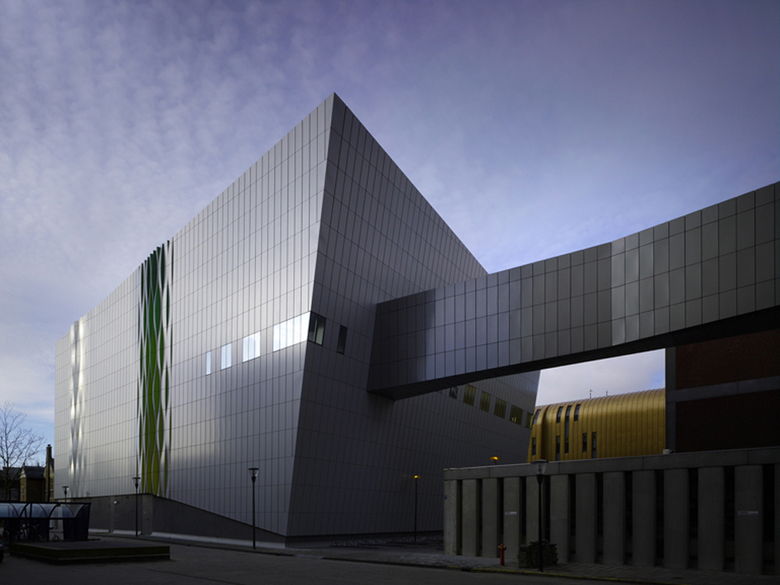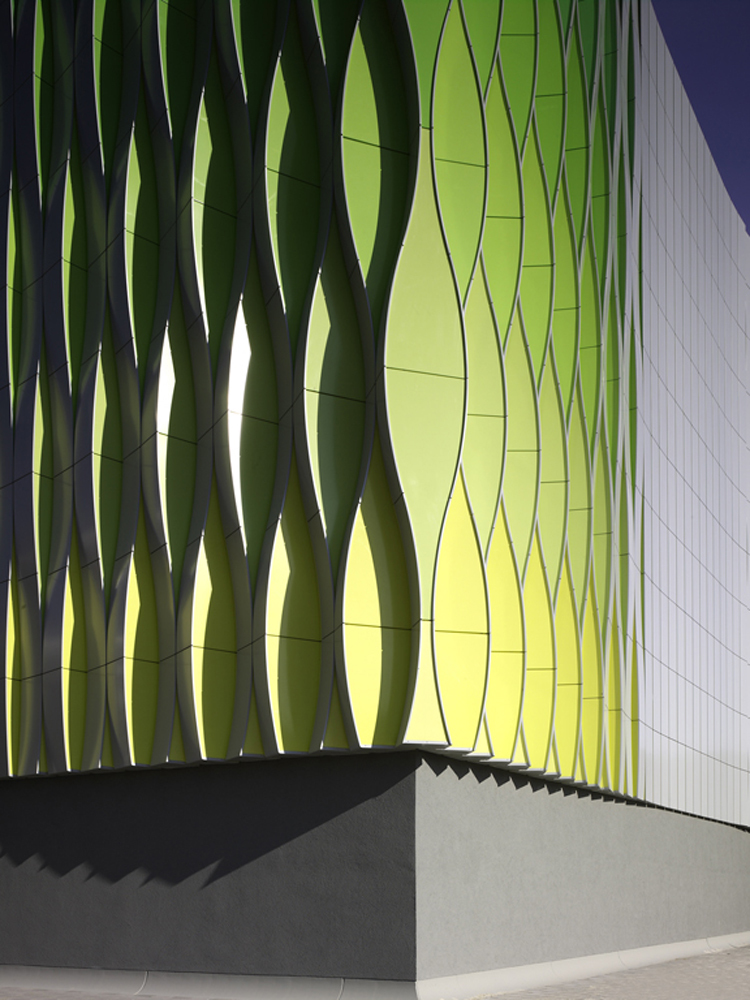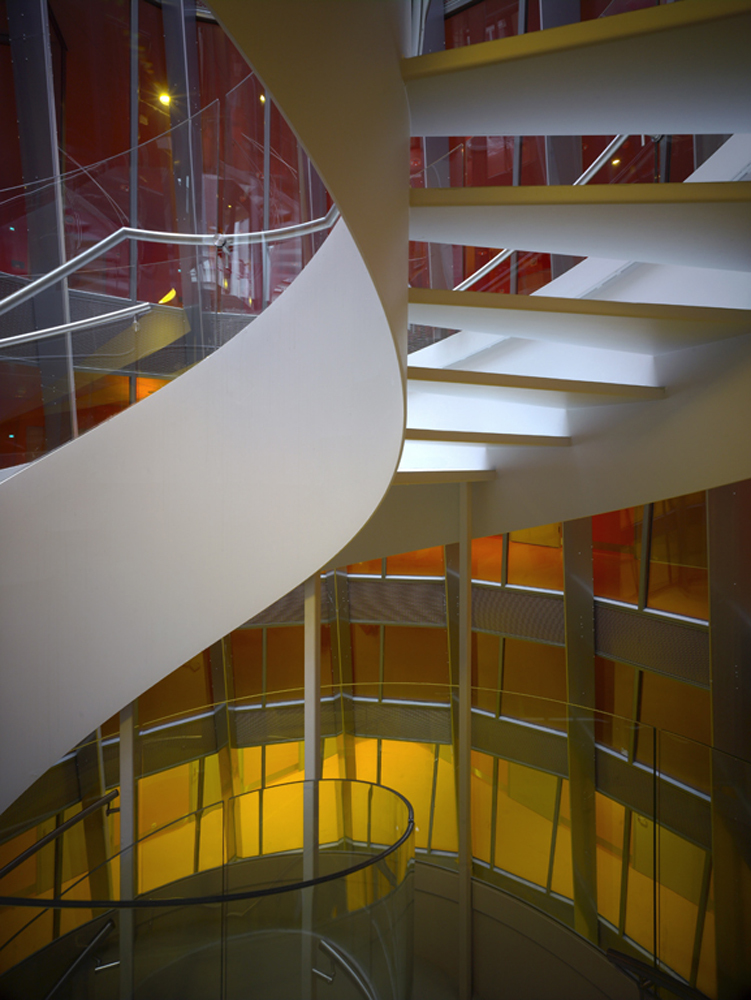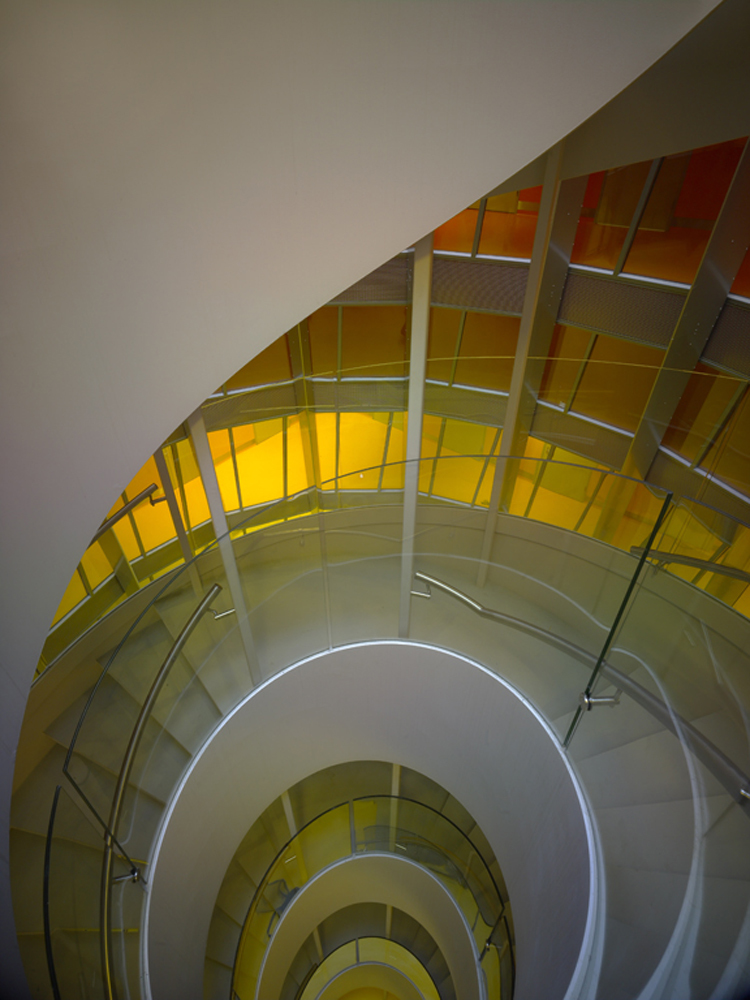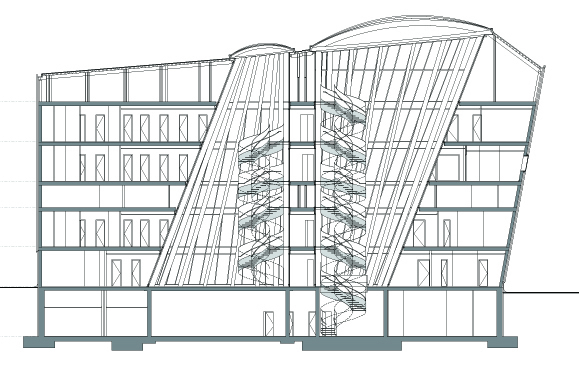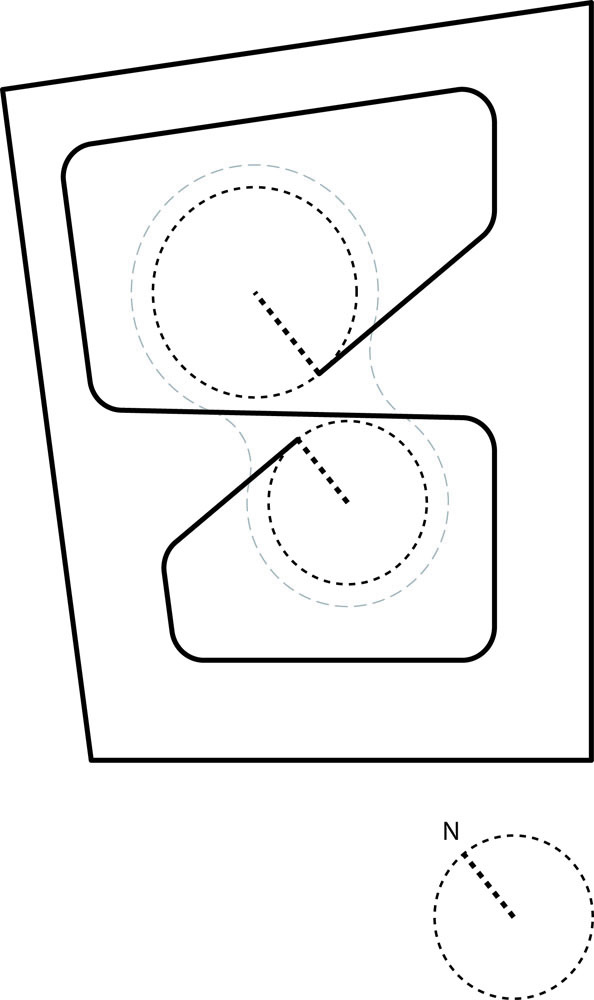Research laboratory
Terug naar projectenlijst- Locatie
- Groningen, Nederland
- Jaar
- 2008 Client
Rijksuniversiteit Groningen
Data
Building surface: 7.497 m²
Building volume: 2.3792 m3
Building site: 1.093 m²
Programme
Research laboratory as part of the medical faculty of the Rijksuniversiteit Groningen
Credits
UNStudio: Ben van Berkel, Gerard Loozekoot with René Wysk, Erwin Horstmanshof and Jacques van Wijk, Wouter de Jonge, Eric den Eerzamen, Nanang Santoso, Ton van den Berg, Boudewijn Rosman, Thomas de Vries, Michaela Tomaselli, Andreas Bogenschütz, Pablo Rica, Jeroen Tacx, Eugenia Zimmermann, Stephan Albrecht, Anika Voigt
Advisors
Construction: ABT, bouwtechnische adviesbureau, Velp, NL
Installations: Deerns, Installatietechnische ingenieursbureau, Rijswijk, NL
Contractor: Heijmans Bouw, Assen, NL
One of the strongest principles of contemporary architecture concerns the integral treatment of the volume; ideally, each of the five facades should reflect clearly what happens inside. The relationship between the building’s usage and its appearance should be transparent and logical. There should be no prioritization of front, back and side elevations as such; instead pure functionality should dictate where openings or details that emphasize certain user-related aspects are placed.
But what happens when a building is asked for that forbids this type of logic? The research laboratory in Groningen will be visited by very few people; on the inside it is a stark, technical environment, with only limited office space. The relationship between outside and inside is almost non-existent. Yet, the building is on a prominent location, passed-by daily by swarms of students and staff of the medical campus of Groningen University. And, at the same time, it needs to be more than a just skin wrapped around an unimaginative box, because the requirements, albeit technological in nature and never to be set eyes on by more than the handful of people authorized to work in this laboratory, are real and complex.
In response to this quandary, UNStudio has designed a deceptively simple envelope constructed from flat, vertical aluminum slats, which, in places, are twisted outwards in bowed forms. Thus, tall, vertical undulations are generated, which present an open or a closed aspect depending on the angle under which they are viewed. This optical effect enlivens the restrained facades, which is made even stronger by the application of bright colours to the flat surfaces that are created by twisting the aluminum slats sideways. On the lower level the colour yellow is used, which gradually changes to green towards the top of the building. The particular shade of green that was chosen reflects the public garden on the corner of the Oostersingel and the Antonius Deusinglaan opposite the building. Consequently, the laboratory, while minimizing or even prohibiting both the incursion of daylight and views into the building, still responds to its surroundings, offers some visual stimulus and, through the optical effects, presents a semblance of transparency.
In the interior, two internal vertical voids allow daylight to enter the interior whilst ensuring that visibility from outside is avoided. These glass voids therefore function as a form of internal facade. By employing the voids, lift shafts and facade structure as constructive elements which ensure stability it becomes possible to create a mostly column-free space within these existing vertical supports. The two voids have the geometry of asymmetrical truncated cones which mirror each other vertically; so that where one has its wider end at skylight level, the other has its wider end at ground level. Shared walkways surround these internal voids, creating a clear organisation whereby dark corridor systems can be avoided. The individual laboratories are situated around the cones and are accessible directly from the shared walkways. This organisation turned out to be more efficient than the common laboratory organization with corridor systems, because of the reduction in the amount of circulation space.
The activities within the Research Laboratory require the separation of four microbiological levels. At the lowest level are the supporting areas including the reception area, the administrative spaces on the second floor and the dispatch area on the ground floor. The laboratory areas are divided into three microbiological levels, each with its own accessibility grade and hygiene screening level. The main entrance to the research laboratory is on the second floor, where it is linked to the central walkways of the WMF building by a footbridge. On ground level there is an entrance where small transport vehicles can deliver and collect goods without causing interruption. The materials used in the design are chosen to comply with the requirements of a laboratory setting. Therefore a homogenous polyurethane floor and wall treatment is employed. The colours used in the laboratory spaces are chosen with regard to the requirements of the technical programs, whilst the use of colour in the central supporting areas is lively and bright. Walls and floors share the same colours. On the ground floor, where daylight is at its lowest, yellow is used. Per floor this colour then deepens through to orange and finally to red on the uppermost level.
